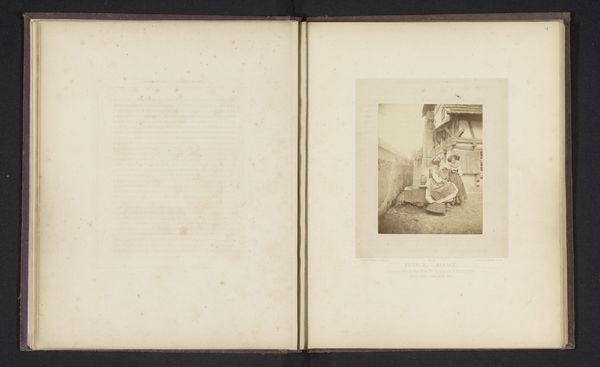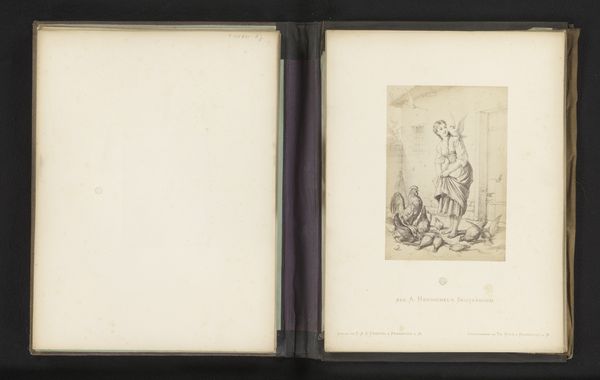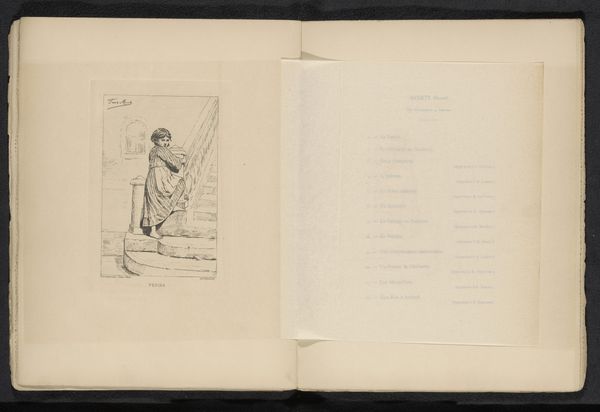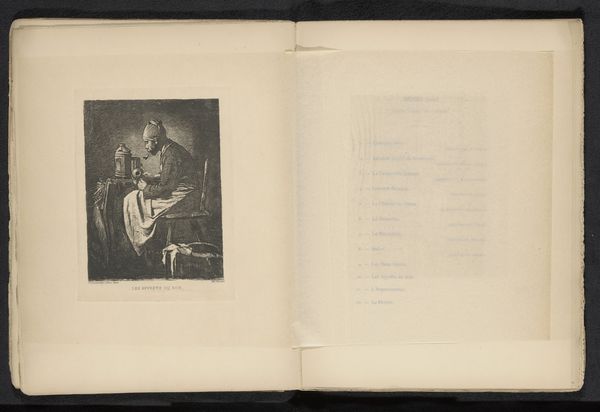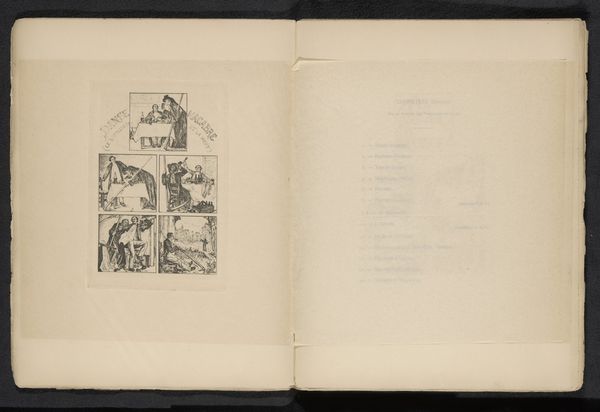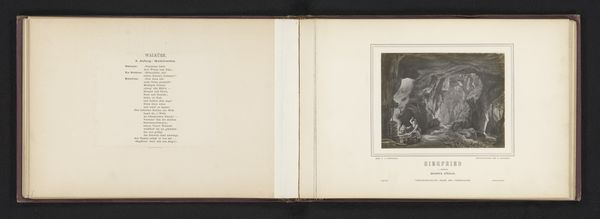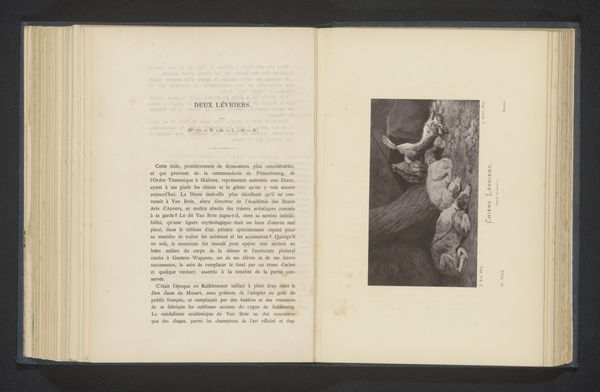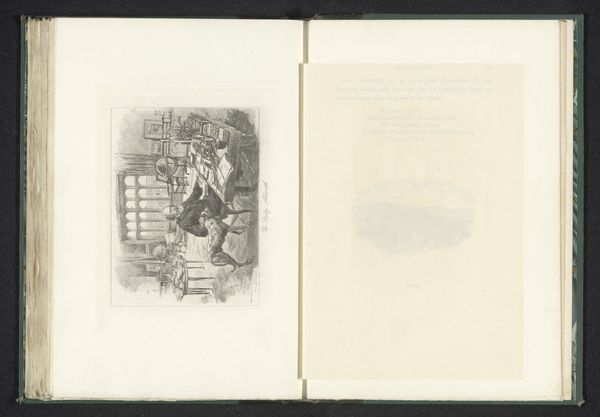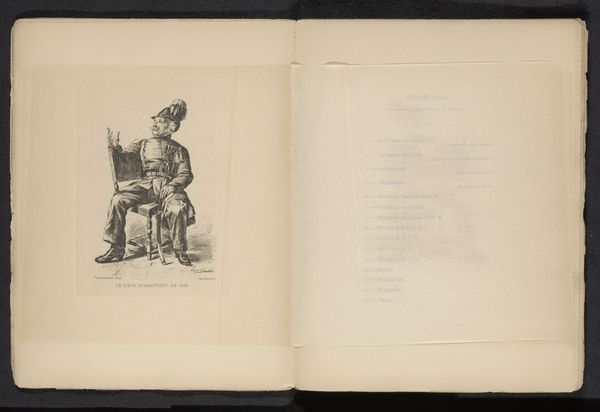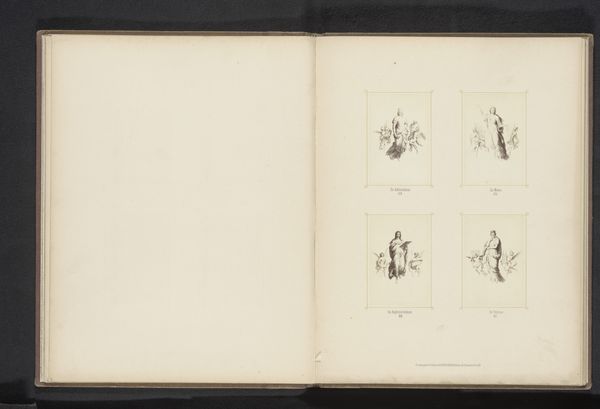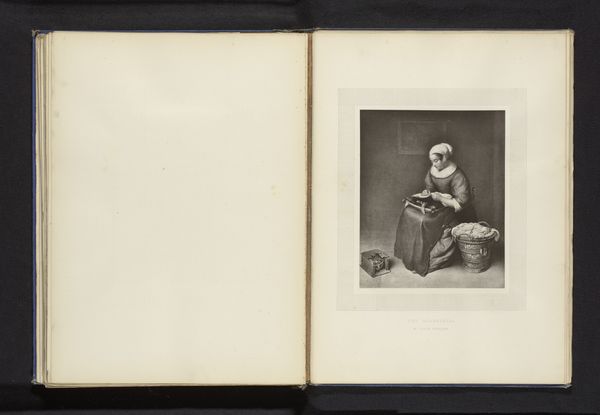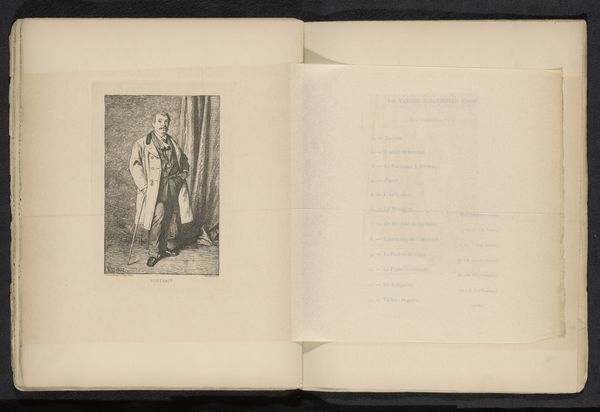
Reproductie van een tekening van een man en een hond door Emile Wauters before 1883
0:00
0:00
drawing, paper, ink
#
drawing
#
dog
#
landscape
#
paper
#
ink
#
line
#
genre-painting
#
realism
Dimensions: height 161 mm, width 83 mm
Copyright: Rijks Museum: Open Domain
Editor: This is a reproduction of a drawing by Emile Wauters, dating from before 1883. It’s done in ink on paper and features a man and a dog in what looks like a landscape. It strikes me as a fairly simple study. What can you tell me about it? Curator: It’s fascinating how a simple ink drawing on paper can reveal so much about the socio-economic realities of art production in the late 19th century. This reproductive print, its materiality hinting at mass dissemination, challenges notions of artistic originality and the preciousness of the unique art object. The image itself depicts, most likely, someone of lower economic means walking with his dog, right? What can we say of that choice of subject matter at this time in Europe? Editor: It's a genre painting, so depicting everyday life. Perhaps a focus on realism? Curator: Exactly. But within realism, the reproduction emphasizes access to art and ideas among different social classes. Ink, paper, the very act of reproduction —these are materials and processes tied to consumption and dissemination. The work is more widely accessible and also highlights a kind of “worker’s” aesthetic – representing a common person, made with common materials. We can consider that landscape in light of production. What kind of landscape do we see, and what kind is implied? Editor: I see mostly a blank canvas actually! This makes me think more about what is absent. Perhaps it implies the lack of leisure time for the working class. Curator: Precisely! It highlights not only *what* is depicted, but *how* it is brought into existence. The drawing's existence is owed to that of an entire working class producing it, and thus speaks to their reality. Editor: So, seeing it as a reproduction really changes how we look at the image and its themes. The materials really underscore that perspective. Curator: Absolutely. We’ve moved away from considering art simply as the vision of the artist and consider it an outcome of complex interactions within a social, economic, and technological system.
Comments
No comments
Be the first to comment and join the conversation on the ultimate creative platform.
